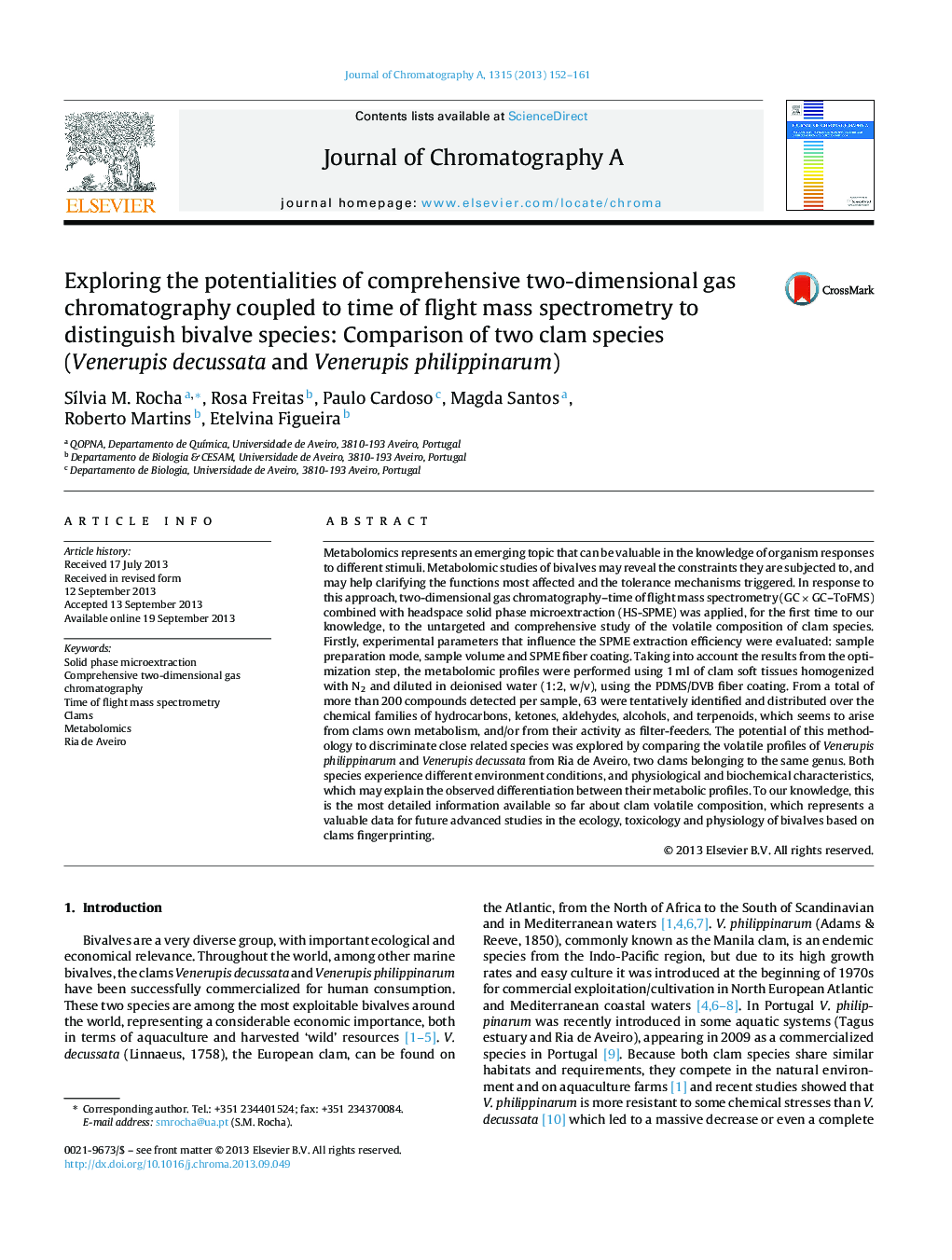| کد مقاله | کد نشریه | سال انتشار | مقاله انگلیسی | نسخه تمام متن |
|---|---|---|---|---|
| 1199883 | 1493611 | 2013 | 10 صفحه PDF | دانلود رایگان |

• HS-SPME/GC × GC–ToFMS was developed for clams metabolite profiling.
• Relevant SPME parameters were optimized.
• Hundreds of compounds were detected by the developed methodology.
• Hydrocarbons, aldehydes, alcohols, and terpenoids are relevant for clams distinction.
• These compounds arise from clams metabolism, and activity as filter-feeders.
Metabolomics represents an emerging topic that can be valuable in the knowledge of organism responses to different stimuli. Metabolomic studies of bivalves may reveal the constraints they are subjected to, and may help clarifying the functions most affected and the tolerance mechanisms triggered. In response to this approach, two-dimensional gas chromatography–time of flight mass spectrometry (GC × GC–ToFMS) combined with headspace solid phase microextraction (HS-SPME) was applied, for the first time to our knowledge, to the untargeted and comprehensive study of the volatile composition of clam species. Firstly, experimental parameters that influence the SPME extraction efficiency were evaluated: sample preparation mode, sample volume and SPME fiber coating. Taking into account the results from the optimization step, the metabolomic profiles were performed using 1 ml of clam soft tissues homogenized with N2 and diluted in deionised water (1:2, w/v), using the PDMS/DVB fiber coating. From a total of more than 200 compounds detected per sample, 63 were tentatively identified and distributed over the chemical families of hydrocarbons, ketones, aldehydes, alcohols, and terpenoids, which seems to arise from clams own metabolism, and/or from their activity as filter-feeders. The potential of this methodology to discriminate close related species was explored by comparing the volatile profiles of Venerupis philippinarum and Venerupis decussata from Ria de Aveiro, two clams belonging to the same genus. Both species experience different environment conditions, and physiological and biochemical characteristics, which may explain the observed differentiation between their metabolic profiles. To our knowledge, this is the most detailed information available so far about clam volatile composition, which represents a valuable data for future advanced studies in the ecology, toxicology and physiology of bivalves based on clams fingerprinting.
Journal: Journal of Chromatography A - Volume 1315, 8 November 2013, Pages 152–161